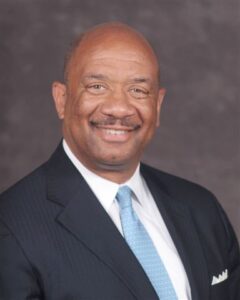Featuring Robert Ross, EVP & Partner at Tier 1 Level Consulting and Former Executive at Merrill Lynch & Wells Fargo Private Bank
In today’s rapidly evolving financial landscape, coaching leaders and financial advisors require more than technical expertise—it demands a blend of analytical precision and emotional intelligence. Wealth management, at its core, is both a science of facts and frameworks and an art of navigating human complexity. The science is what most professionals can grasp: asset allocation, tax strategies, compliance. But the art? That’s where trust is built, confidence is earned, and decisions are shaped by life experience, cultural beliefs, and personal preferences.
demands a blend of analytical precision and emotional intelligence. Wealth management, at its core, is both a science of facts and frameworks and an art of navigating human complexity. The science is what most professionals can grasp: asset allocation, tax strategies, compliance. But the art? That’s where trust is built, confidence is earned, and decisions are shaped by life experience, cultural beliefs, and personal preferences.
As someone who’s led teams at Merrill Lynch and Wells Fargo Private Bank, I’ve seen firsthand how advisors can elevate their impact by mastering both dimensions. Here are three critical areas where coaching can transform performance—and where the art and science of wealth management converge.
Q1: How is AI transforming the wealth management business?
A: AI is no longer a distant concept—it’s a present force reshaping how advisors operate, engage, and scale. From predictive analytics to generative tools, AI is streamlining compliance, surfacing client insights, and enabling hyper-personalized advice. But the real opportunity lies in how advisors integrate AI without losing the human touch.
At Merrill Lynch and Wells Fargo Private Bank, I saw firsthand how technology could enhance advisor productivity—but AI takes it further. It’s not just about efficiency; it’s about relevance. Advisors who embrace AI as a strategic partner—not a replacement—will be better positioned to serve NextGen clients, anticipate market shifts, and deliver value at scale.
Q2: What does concierge-level service look like for UHNW clients—and how can advisors deliver it?
A: Concierge service isn’t about luxury—it’s about precision, discretion, and proactivity. UHNW clients expect their advisors to anticipate needs, coordinate across legal, tax, and philanthropic domains, and deliver seamless experiences.
To do this well, advisors must move beyond transactional relationships. It starts with understanding the client’s full wealth architecture—from trusts and business interests to lifestyle planning. Then, it’s about execution: participating in meetings, tracking deliverables, and integrating strategies across disciplines.
At Wells Fargo Private Bank, I emphasized a “white-glove mindset”—where every touchpoint reinforced trust and sophistication. Advisors who master this approach don’t just retain UHNW clients—they become indispensable.
Q3: How can financial advisor teams hold each other accountable to written roles and responsibilities?
A: Accountability is the heartbeat of high-performing teams. It’s not enough to assign roles—you have to embed ownership. That means written charters, clear KPIs, and regular peer-to-peer check-ins.
The best teams I’ve coached use mutual accountability—not top-down enforcement. They hold each other to promises, track progress visibly, and foster a culture where feedback is welcomed, not feared.
At Merrill Lynch, we implemented structured team models with defined vertical and horizontal roles. When everyone knows what “good” looks like—and how their work connects to the team’s mission—accountability becomes organic. It’s the difference between a group of individuals and a true team.
Email me at: Robert.Ross@tier1levelconsulting.comfor a free consultation.







